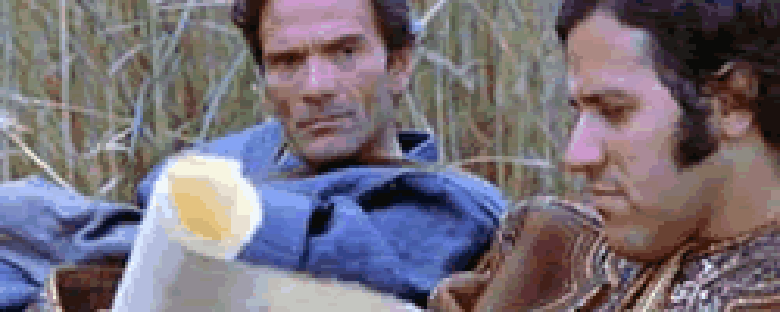Reviews
Il decamerone
Pier Paolo Pasolini
Italy / West Germany / France, 1970
Credits
Review by Leo Goldsmith
Posted on 10 July 2004
Source 35mm print, screened at Film Forum
Related articles
Features: The Final Films of Pier Paolo Pasolini
Reviews: Arabian Nights
Reviews: The Canterbury Tales
Reviews: Salò, or The 120 Days of Sodom
For his adaptation of The Decameron, Pasolini tells ten stories of Neopolitan peasant life, taking roughly one story from each of the ten sections of the book. Rather than using the device of the storytellers (who, in Boccaccio, spend ten days in seclusion while waiting out the plague), the film presents the stories in two parts, with each part structured around one story that frames the others. In the first section, stories are simply and somewhat haphazardly interspersed with portions of the story of Ciappelletto, a murderer, thief, and homosexual who makes a false confession on his deathbed and thereafter becomes a saint.
In the second part, however, the stories are woven together with a more traditional frame-story. This story follows the artist Giotto, who has come to Naples to paint a fresco on the wall of the city’s cathedral. Pasolini himself plays Giotto, and the stories told in the film’s second part are framed by the artist’s progress on the fresco. Indeed, Giotto literally frames these stories: the everyday circumstances of the Neopolitan peasants that he witnesses become scenes in the fresco that he is painting. Giotto is even seen framing these scenes between his fingers, like a cinematographer, before he commits them to paint on the wall of the church. What Pasolini here proposes is a harmonious unity of artwork and life. The peasants and their stories are incorporated into the artist’s fresco, just as the artist Giotto and Pasolini himself are integrated into the film image. In one of the film’s final episodes, Giotto dreams of the Virgin Mary, flanked by angels, with the peasants and sinners of the film’s stories arranged below her. The image is flat and symmetrical, rather like the composition of a pre-Renaissance painting by the real Giotto or his mentor, Cimabue. This is the character Giotto’s vision of the order of his world, a perfectly balanced and serene hierarchy of the divine and the human.
Indeed, this image can also be interpreted as Pasolini’s own vision of the divine order of this idealized medieval Naples, though it is quite distinct from any vision that the director has offered of modern society. It is perhaps for this reason that Giotto/Pasolini, upon completing his fresco, wonders, “Why create a work of art when dreaming about it is so much sweeter?” At the end of an almost invariably sunny film, in which even sin and death are matters of little concern, this final line strikes a rather somber note. In concluding his film with this question, Pasolini is perhaps questioning his own dream, his idealization of this beautiful, bucolic world he has created in which peasant and artist and the Virgin Mary coexist in divine harmony.
We don’t do comments anymore, but you may contact us here or find us on Twitter or Facebook.



